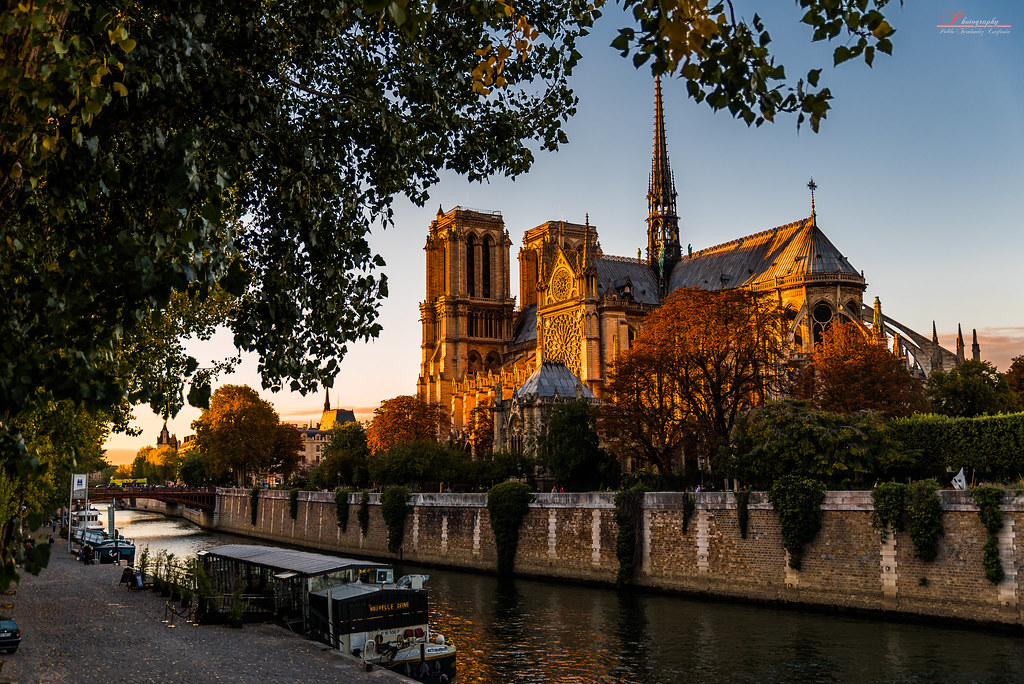
On April 15, 2019, Paris’ most famous cathedral caught fire. The cathedral burned for fifteen hours, resulting in massive amounts of damage that would take years to repair. The cause of the Notre Dame fire is still unknown, although it is believed to have been some sort of electrical mishap. The flames destroyed one of the three spires, the majority of the roof, and the cathedral’s upper walls, as well as damaging historic relics and statues.
Parisians watched the fire in tears, mourning as one of their greatest historic landmarks was engulfed in smoke. The Notre Dame has been an icon of Paris since its construction, beginning in 1163 under Bishop Maurice de Sully and coming to completion in 1260. The cathedral sits on Île de la Cité, an island in the Seine River, located in the first arrondissement of Paris. For centuries, it has been a place of worship and a testament to the Catholic Church’s contributions to art and architecture.
The spire of the cathedral was a staple of the Paris skyline as well as French Gothic architecture. During the fire, it collapsed, sending burning rubble crashing to the floor. The roof was a unique aspect of the Notre Dame, constructed of wood from oak trees over hundreds of years old from the forests of Bercé in central France. The roof of the cathedral was known as la forêt, which means “the forest” in French.
However, for the next five years following the fire, architects and historians worked to restore the cathedral of Paris to the best of their abilities. The process began only ten days after the fire was tamed, as investigators entered the remains of the Notre Dame to assess the damage and potential cause. From April 2019 to August 2021, the reconstruction project was held in a “safety phase” to clean the wreckage and ensure that the restoration would happen safely, so as to not cause further damage to the remains of the original building.
The process of reconstructing the cathedral began slowly and took time, but each step in the rehabilitation was a celebratory accomplishment. In September of 2022, the stained glass windows were fully restored, after facing serious damage from the smoke and dust emitted from the fire. The 170 year old windows were miraculously strong enough to withstand the high temperatures and are now back on full display.
Then, on December 16, 2023, a new spire was constructed – adorned with a new golden rooster and cross. The golden rooster represents the long standing national emblem of France, and was blessed by Archbishop Laurent Ulrich before being placed atop the spire. At last, one of the most significant symbols of Paris had been restored.
Nearly three months later, the roof was completed and, this past September, the bells were reinstalled. Their return required a convoy of trucks, carrying the bells that weighed at over 3,500 kilograms and represented one the final steps of the reconstruction process.
As the finishing touches were completed, French President Emmanuel Macron made his final visit to the reconstruction site for one last look before the grand opening. Finally, on December 7th, 2024, the Notre Dame’s doors were reopened to the public.
For the first time in five years, the thunderous organ sounded, welcoming people back into the sacred place of worship. An opening service, inaugural mass, and a televised ceremony paid homage to and celebrated the unveiling of the good-as-new Notre Dame. The cathedral, despite minor changes, holds the same historical and religious significance as it has for centuries. The art, sculptures, and limestone walls are each a testament to what the cathedral has withstood in its time.


